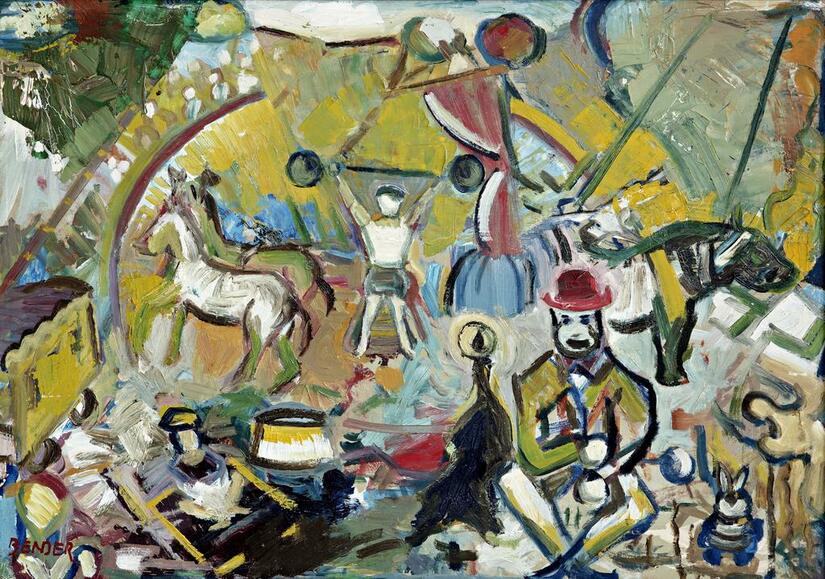Adolf Bender: Zirkus, 1959 (Circus)

Oil painting, 82 x 62 cm
"My father always showed a great affinity for other artists. For him, artists were not only "classical" artists, but any kind of performers: jugglers, acrobats, cabaret artists, etc. His depictions are not about a circus per se, but about an attitude to life, about memories. Fairs and cabaret also fascinated him, and he felt very attracted by all this," said Hans Bender, the painter's son, in an interview on 5 November 2019.
As in a kaleidoscope, Bender shows the traditional elements of a circus program from the time this painting was created: the artist and acrobats, the clown, animal dressage (including horses and a seal), a trapeze and a circus ring.
Today there are about 300 circus companies in Germany, which are widely known and popular. Their program is based on "storytelling" and on creating an all-encompassing work of art, in which the individual performances are embedded. As early as 2005, the European Parliament unanimously adopted a resolution confirming the status of the circus as a European cultural asset. The aim was to improve the living situation of circus employees. Doris Pack MEP (Christian Democrats) had elaborated and justified this draft. This brings us back to the academy, as she had been a member of its committees for many years and played a decisive role in its development.
Adolf Bender (*1903 in Mainz, †1997 in St. Wendel, today both in Germany) was a painter and an empassioned democrat from the nearby district town of St. Wendel. Apart from his two exhibitions in 1962 - then the academy's third exhibition - and in 1985 ("The Peat Bog Soldiers - Democrats in the Concentration Camp"), his democratic convictions connected him with the Europäische Akademie Otzenhausen. As a politically active opponent of the National Socialists, Bender fled to France, was interned in the concentration camps of Börgermoor and Esterwegen after his return, and was finally drafted into the Wehrmacht in 1941. "To make sure that this does not happen again ", as he said, he combated fascism by means of art and education after the war. He processed his experiences in the Börgermoor in the "Peat Bog Soldier series", which is widely known. The Adolf-Bender-Zentrum für Demokratie und Menschenrechte (Adolf Bender Center for Democracy and Human Rights) in St. Wendel continues his legacy.